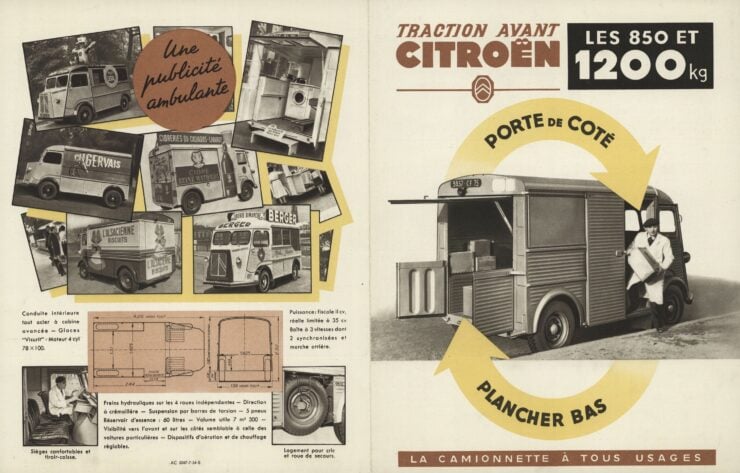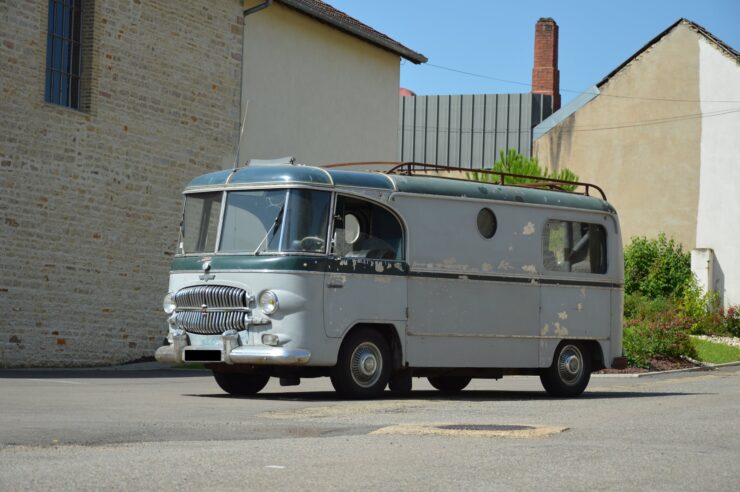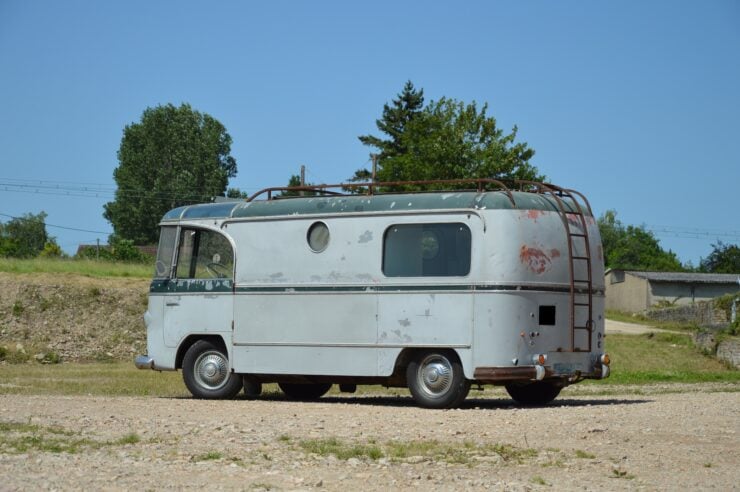This is a Citroën H Van as you’ve probably never seen it before, with a custom made coachbuilt body by French company Barou. It was specifically designed as a mobile office and home for a Mr Charlin, the owner of a company named Socome, based in Lyon that specialized in the supply of garage equipment.
The Citroën H van, or the Type H as it’s sometimes called, was by far the most advanced commercial van design of its era, despite its relatively antiquated looks. It made use of monocoque construction, it had four-wheel independent suspension, and a front wheel drive system that allowed it to have a very low, flat floor in the back ideal for carrying cargo.
Fast Facts – The Citroën H Van
- The Citroën H Van was produced from 1947 until 1981 with very little in the way of updates, a remarkable 34 year production run.
- Citroën made almost half a million of them in total, with the final number produced sitting at 473,289.
- The van features an unusual corrugated steel body, a design chosen as the panels have more rigidity with little weight penalty, a critical feature as the van uses monocoque construction.
- The Citroën H Van was developed into almost every type of vehicle imaginable, from simple delivery vans and trucks to ambulances, camper vans, horse transporters, mobile cafes and food vans, and even school busses.
Citroën H Van
The styling of the Citroën H Van stopped the motoring world in its tracks when it was first shown to the public at the 1947 Paris Motor Show, it used an unusual corrugated steel body design not dissimilar to the aircraft made by the German Junkers aircraft company, and unusually for the time it was front wheel drive.
When it comes to most things in life the French have their own peculiar style and this is nowhere more evident that in the world of car design – the Citroën 2CV, Citroën DS, and the earlier Citroën Traction all being key examples of this phenomena.
Citroën had developed a van called the Citroën TUB (Traction Utilitaire Basse) in 1939 which used many components from the Citroën Traction in order to keep production costs down. The TUB was essentially a box on wheels with a front wheel drive system and a low flat floor in the rear for cargo.
The production of TUB ceased during the German occupation of France, and the post-WWII Citroën H Van borrowed heavily from its predecessor, though the styling was notably different, particularly due to the aforementioned use of corrugated steel for the body.
Unusually for the time, the Citroën H Van was designed with monocoque construction rather than a standard body-on-frame design, this meant that the van was lighter and simpler to build than its contemporaries.
Another unusual feature was the use of front wheel drive, no commonplace on many vans it was unique back in the 1940s and it allowed the H Van to have a very low flat floor in the back with 6′ of headroom.
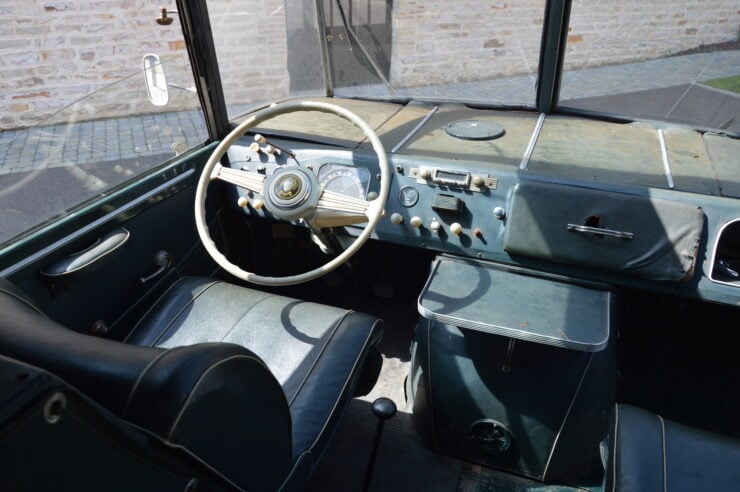
The driving position offers excellent visibility, with expansive windows surrounding the driver, even up in the roof.
The years immediately after WWII in Europe were characterized by the severe austerity measures that had been implemented after the war had almost bankrupted many of the nations involved.
This meant that the general populace had little money to spend on automobiles and so affordable vehicles like the Citroën 2CV and the Citroën H Van were the key to getting the country mobile again as the rebuilding effort began.
Citroën H Van Specifications
Citroën developed the H Van to use the same front wheel drive engine system as the pre-existing Citroën Traction, the headlights were sourced from the 2CV, and the gauges came from the Traction Avant.
When it was first released the H Van was powered by the Traction 1,911cc inline-four cylinder engine producing approximately 50 bhp at 3,800 rpm. The suspension, and 3-speed gearbox were also sourced from versions of the Traction, specifically the 11 and 15.
Braking was accomplished with hydraulic drum brakes on all four wheels and suspension consisted of torsion bars and shock absorbers. Steering was rack and pinion, and the cruising speed was 55 to 60+ mph depending on model.
Over the course of its production run the exterior design of the H Van would differ little, however different petrol and some diesel engine options were offered. When ordering you could choose a van or pick-up truck, or alternatively could could get a powered rolling platform and have a unique body built by the coachbuilder of your choice.
When it was originally released it was simply named the H Van however the model series would include the H, HY, HZ, HX, and HW sub-designations over the course of the production run.
Today the unique styling and remarkable engineering of the H Van and its siblings have seen the surviving examples become highly collectible. Rust has been the primary killer of these vans, as with essentially all vehicles from this era, but it is still possible to find excellent examples.
One Of A Kind: The Citroën H Van By Barou
The van you see here looks nothing like the production H Vans produced by Citroën though it does use the exact same running gear.
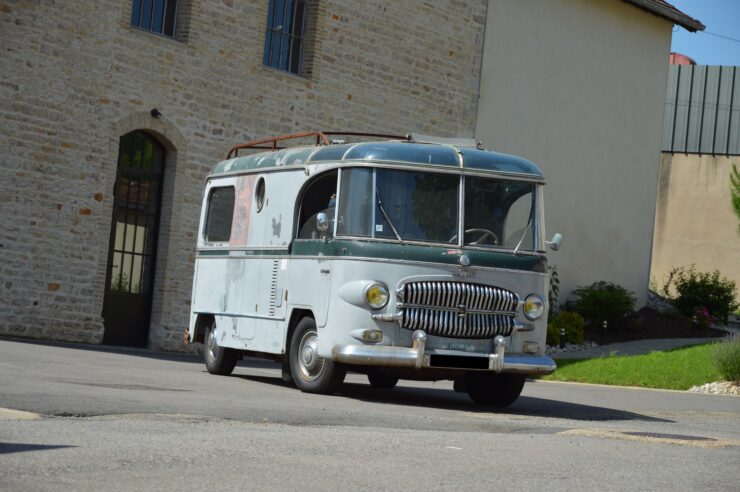
There are perspex windows in the van at the front above the driver, a handy feature when driving in the Alps.
This vehicle started life as a powered platform from Citroën that was bought by a Mr Charlin and entrusted to French coachbuilder Jean Barou, based in Cournonsur-Rhône since 1940. Barou had survived the war years building trailers for bicycles, allowing people to haul cargo behind their bikes at a time when vehicles and fuel were in limited supply.
After the war he turned to both racing cars and more utilitarian vehicles like the example you see here. This H Van and its trailer was developed by Barou to be a rolling office and accommodation for Mr Charlin, that would allow him to travel around the country showcasing and selling his wares.
Barou and his team developed an entirely unique body that took ample styling cues from the jet age, with a prominent chrome grille ands bumpers, a wrap around wind screen with additional windows above the driver, an aircraft-like circlar window in the side entry door, and of course the matching trailer.
Now in need of a careful restoration this highly unusual piece of 1950s automotive design is due to cross the auction block on the 19th of September in France with a price guide of €40,000 – €60,000, which works out to $47,400 – 71,000 USD.
If you’d like to read more about this unique camper van or register to bid you can click here to visit the listing on Aguttes.
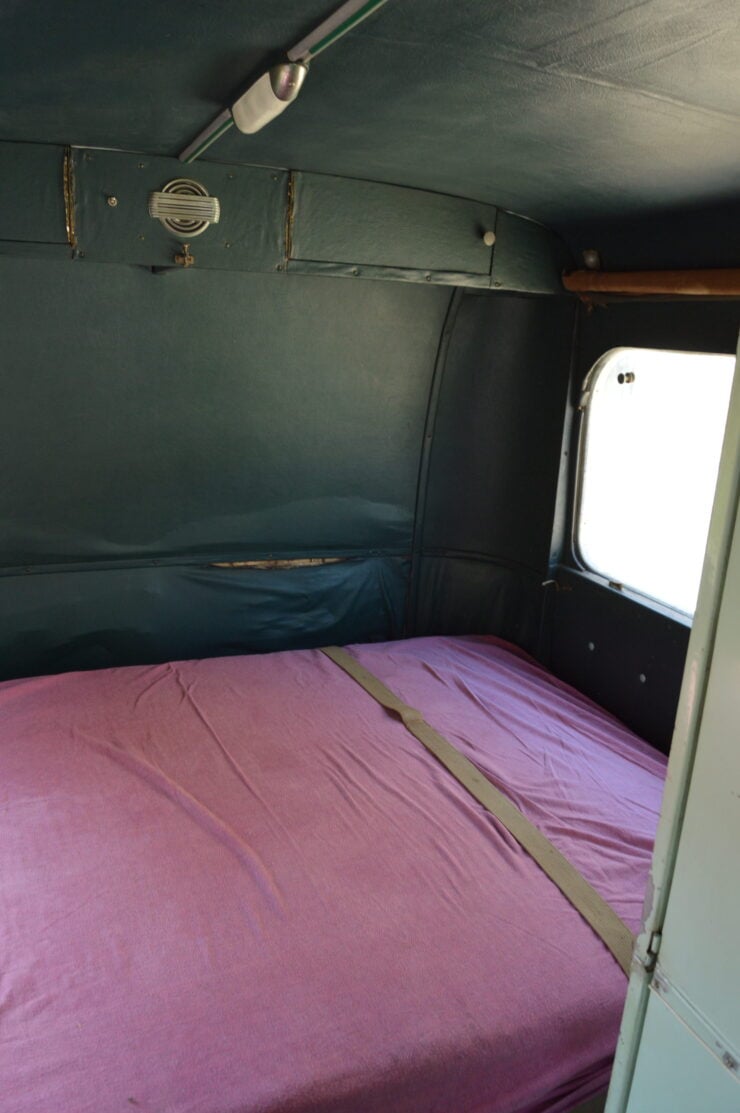
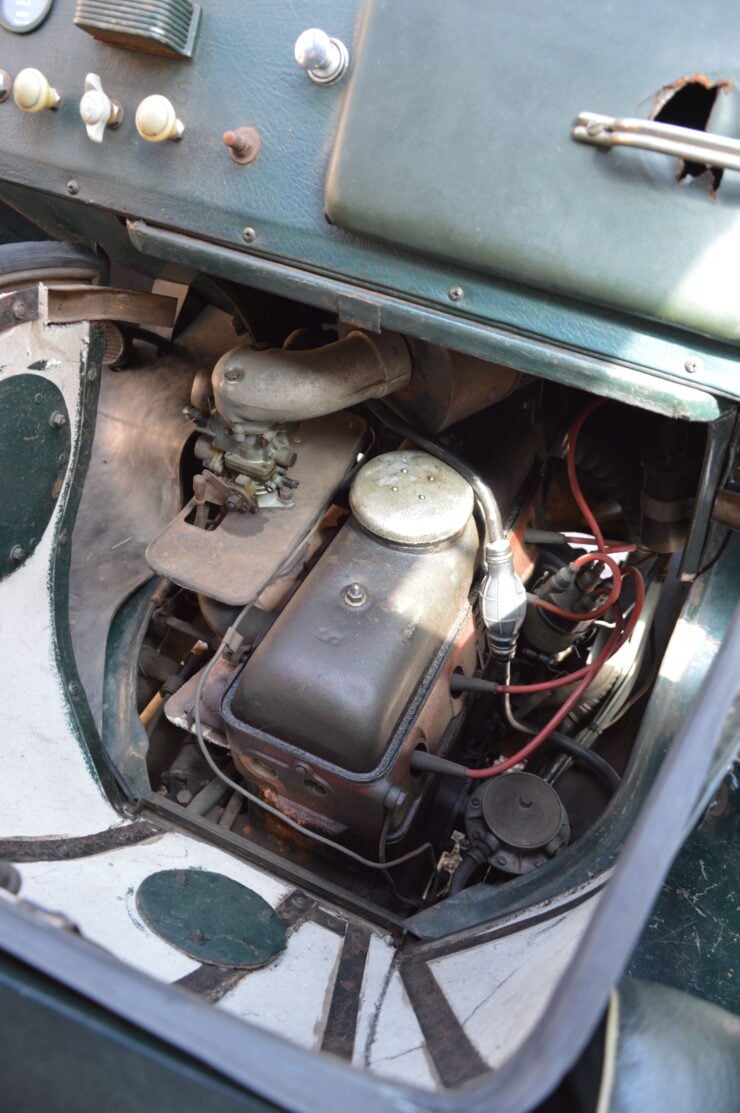
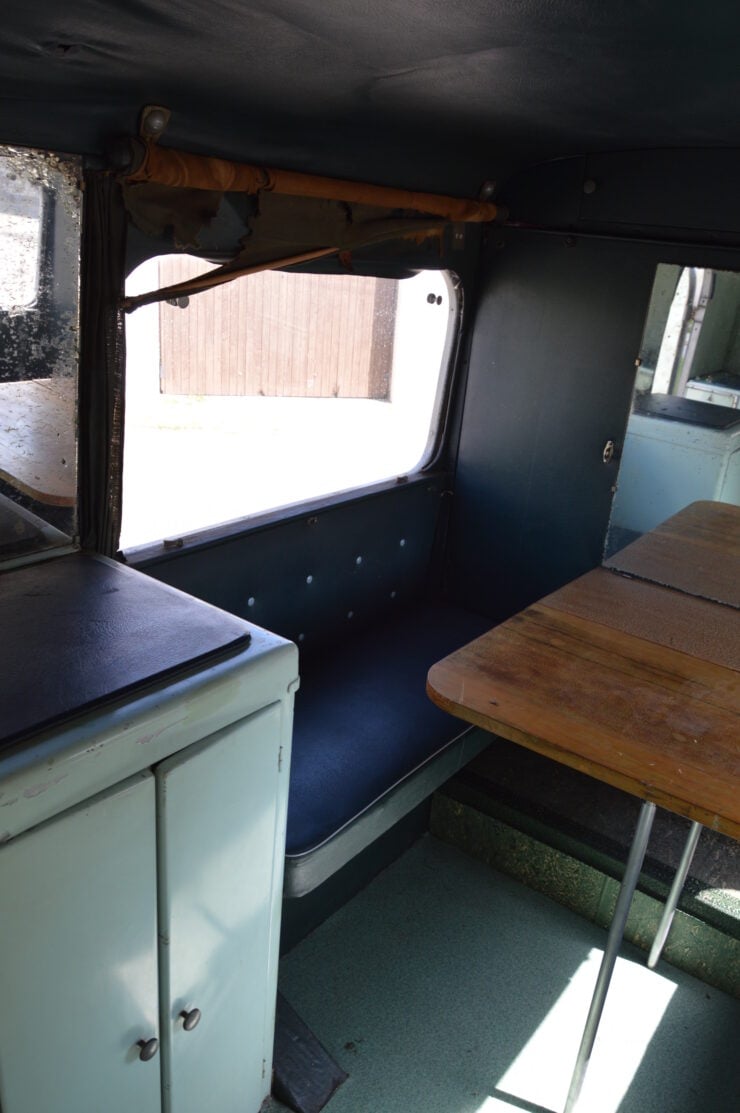
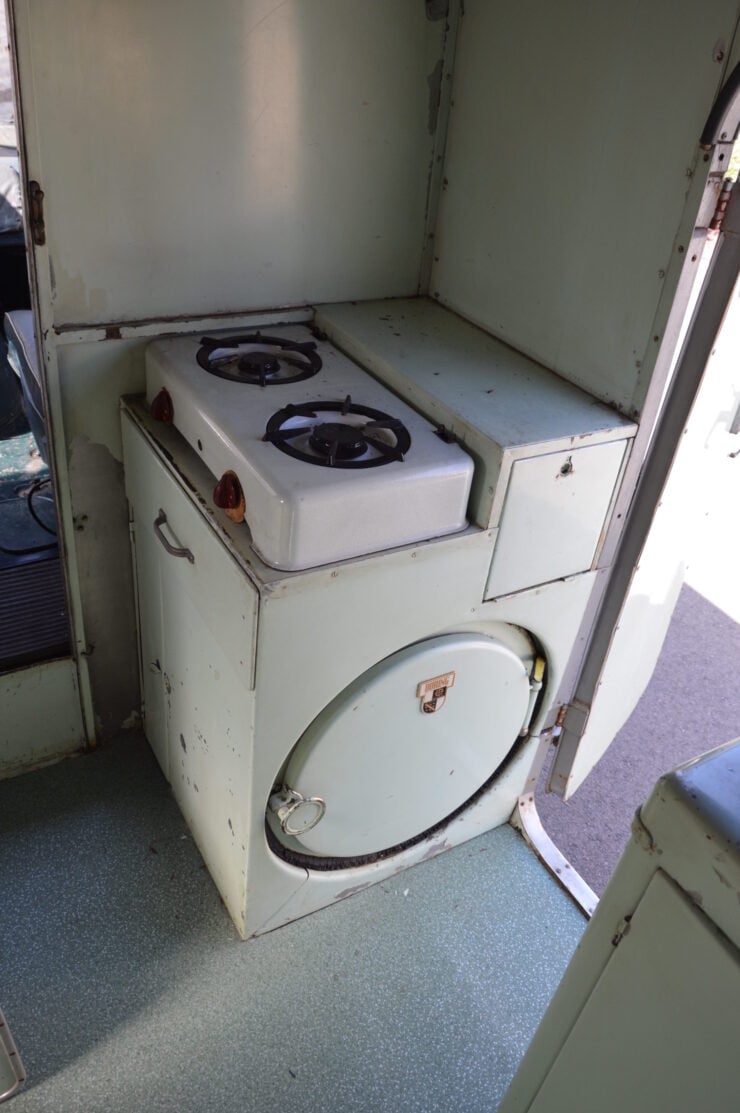
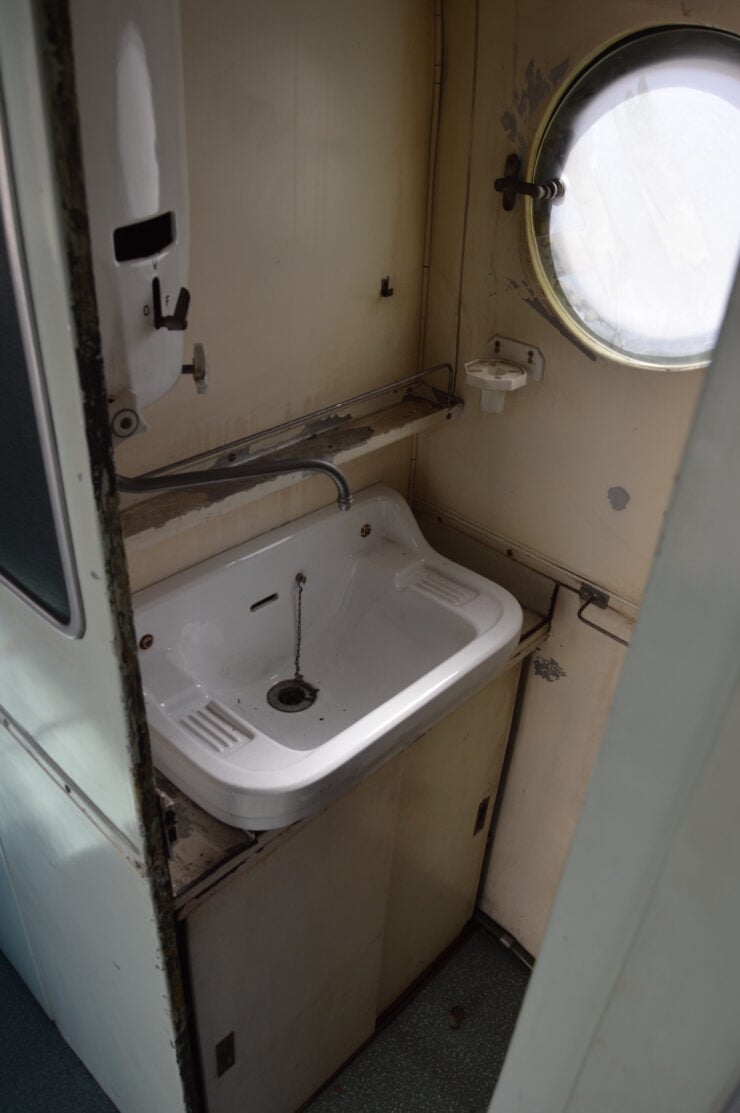

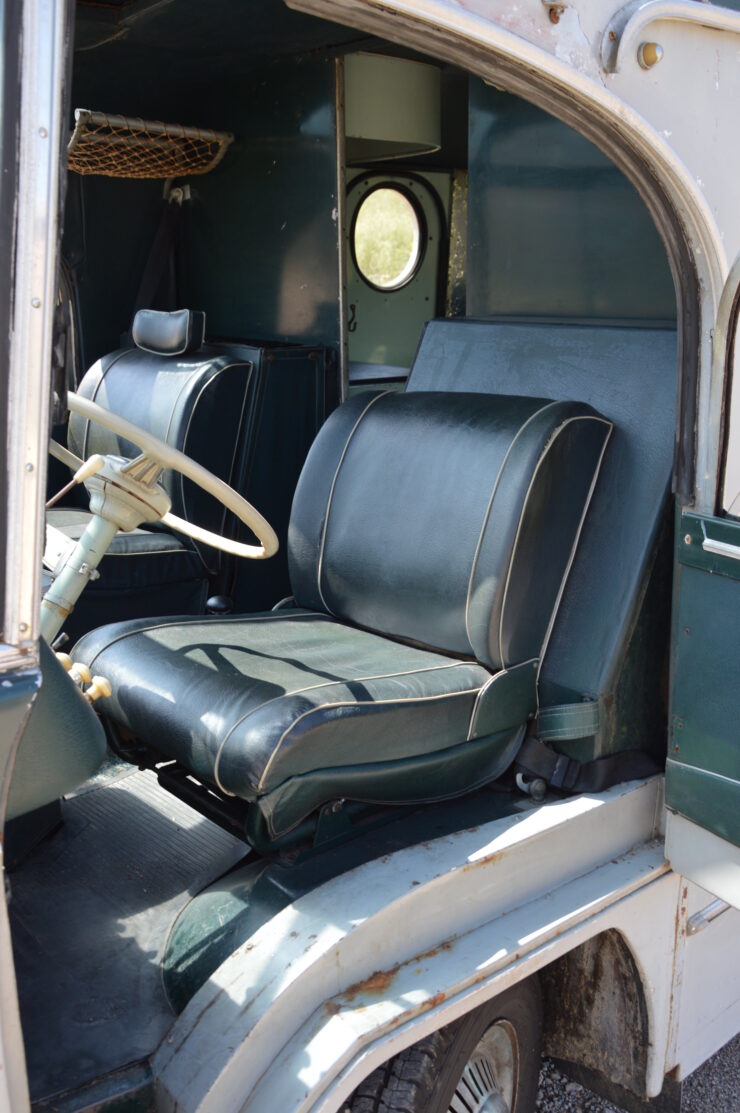
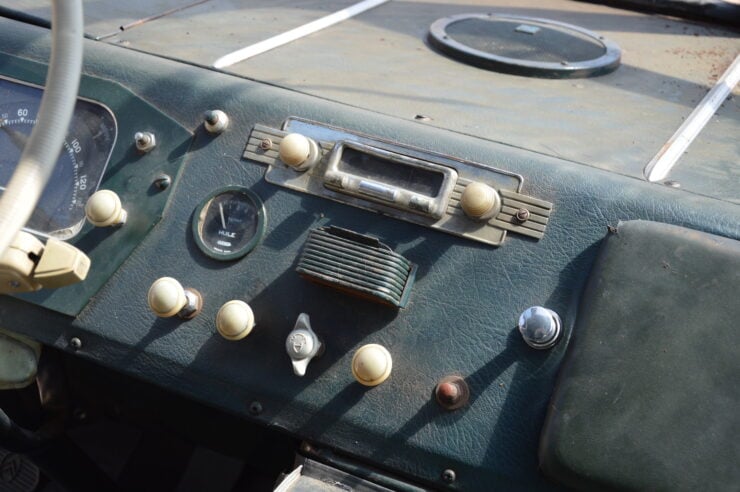
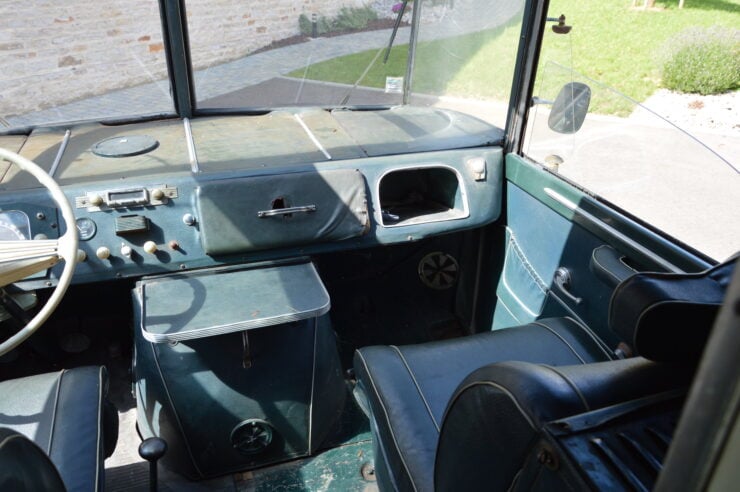
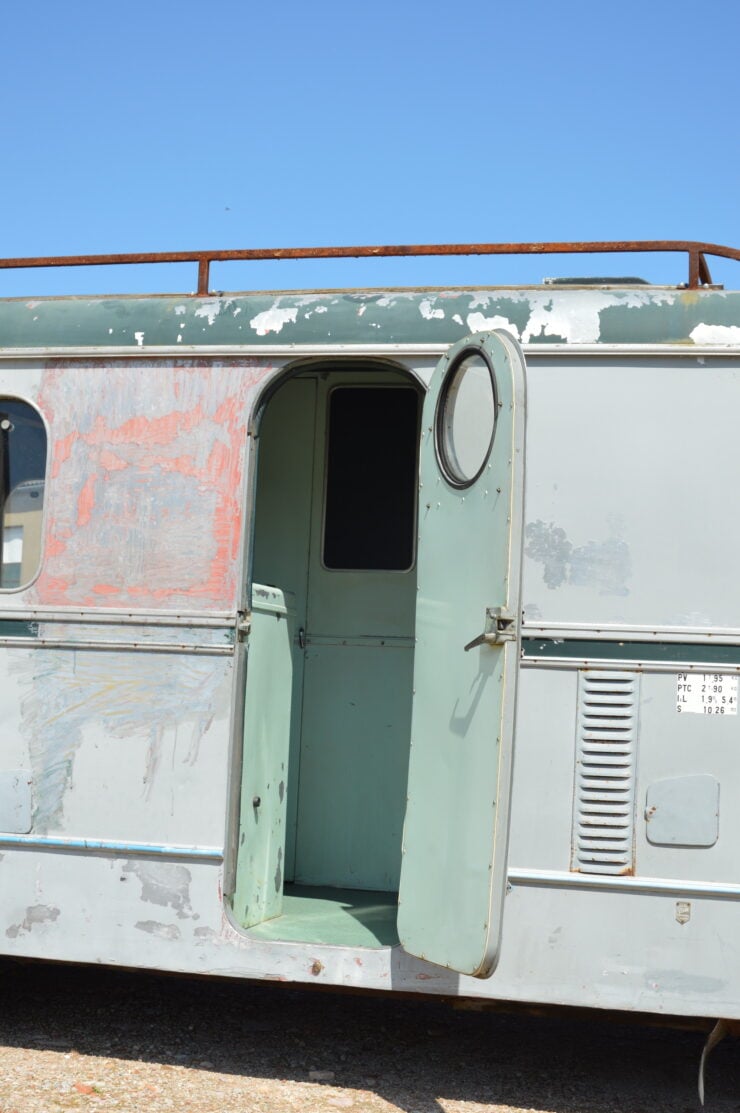
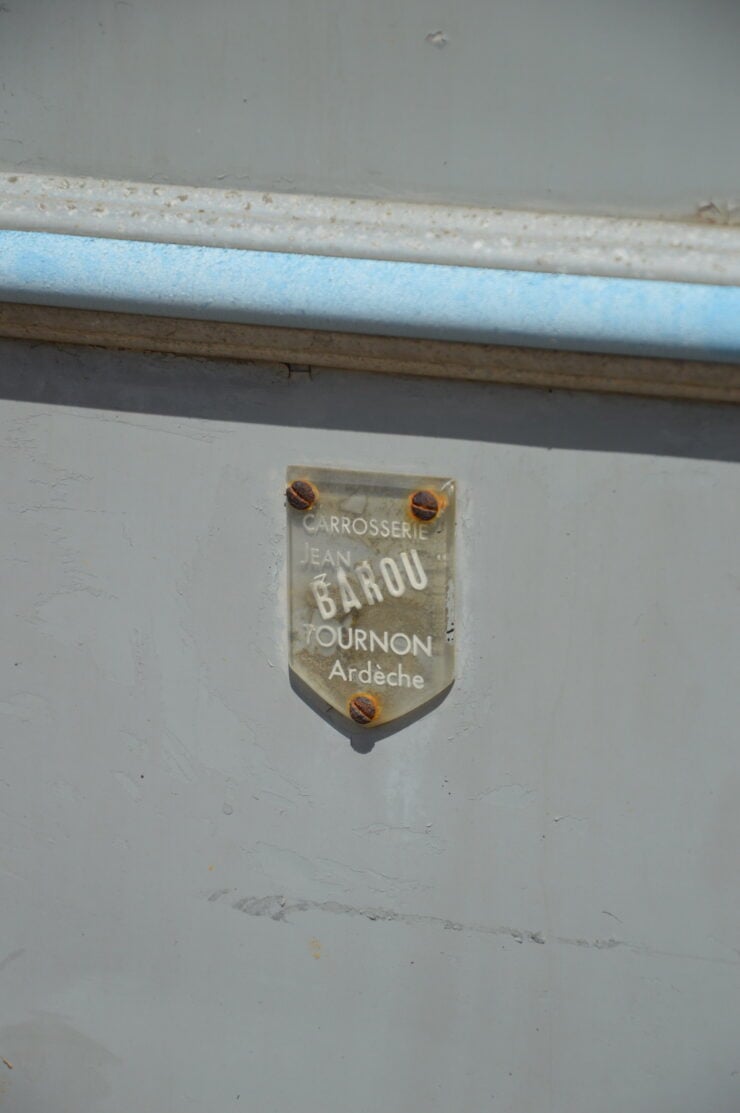
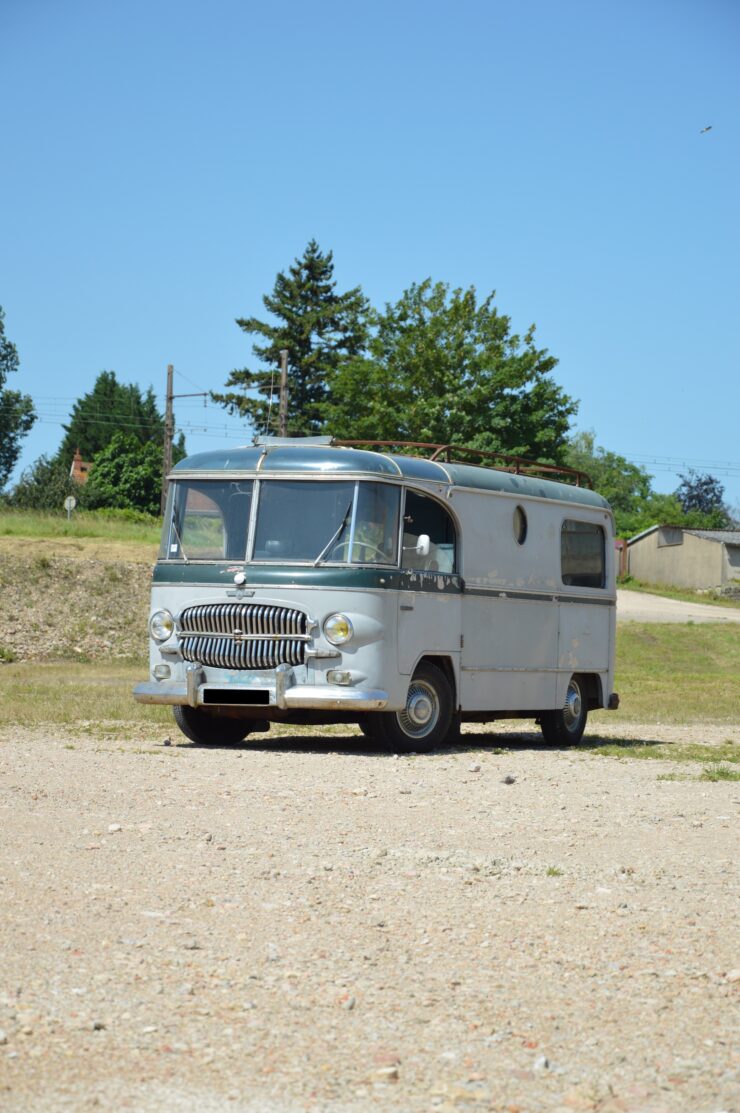
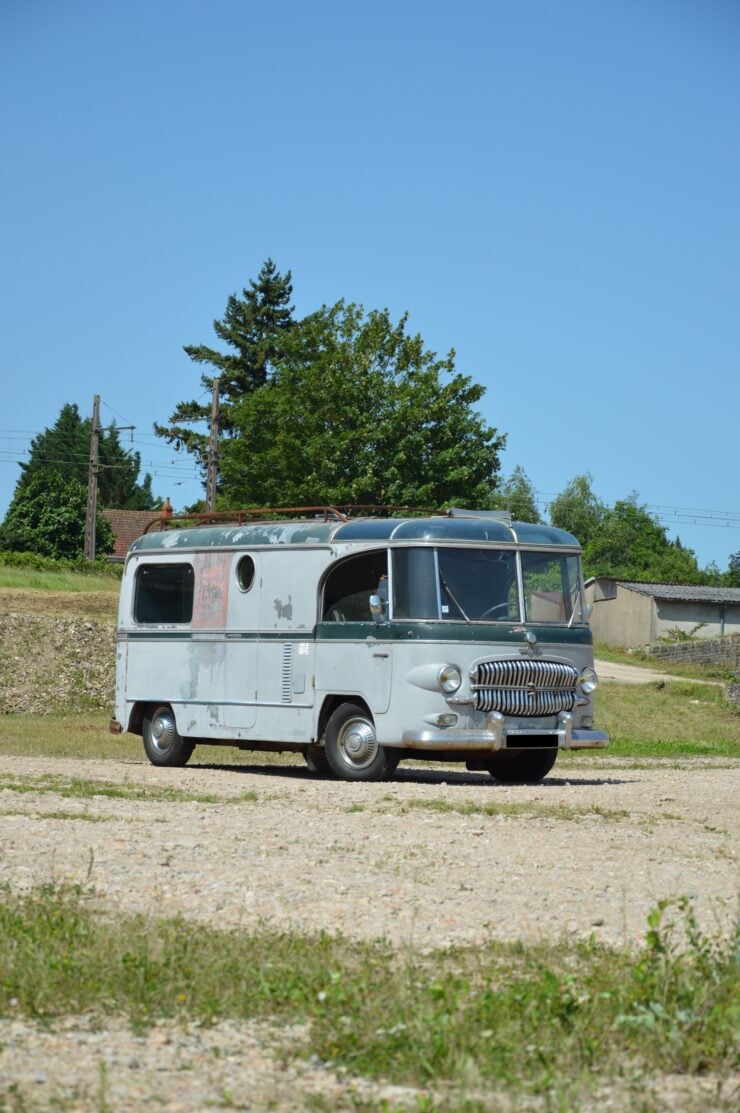
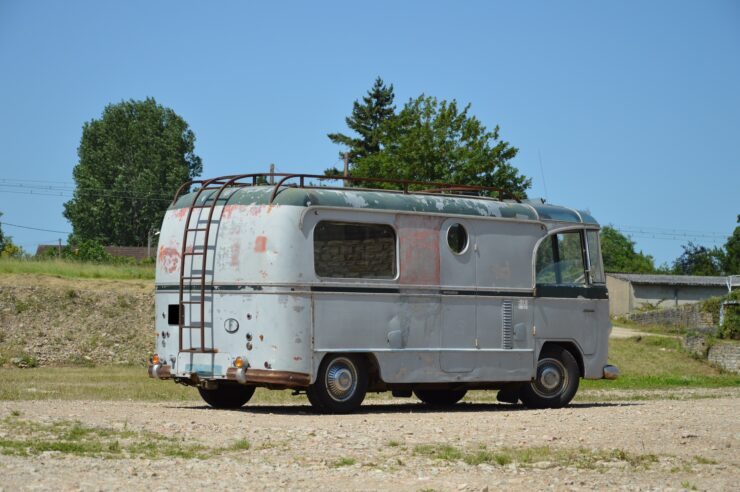
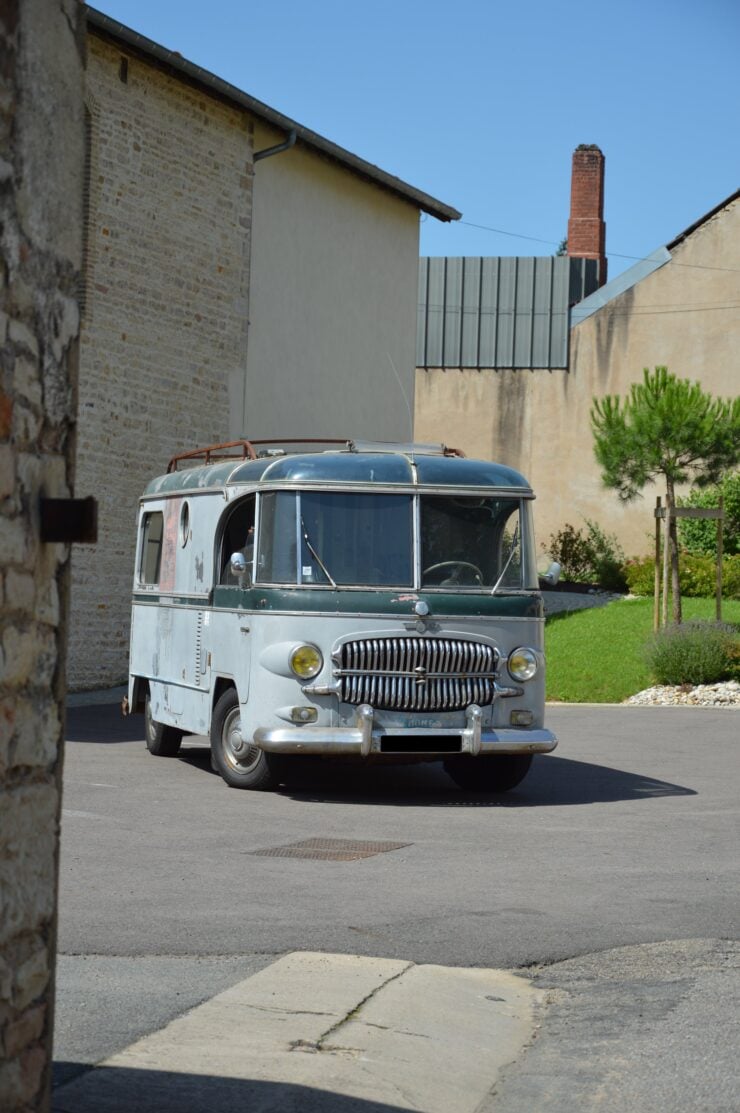
Images courtesy of Aguttes
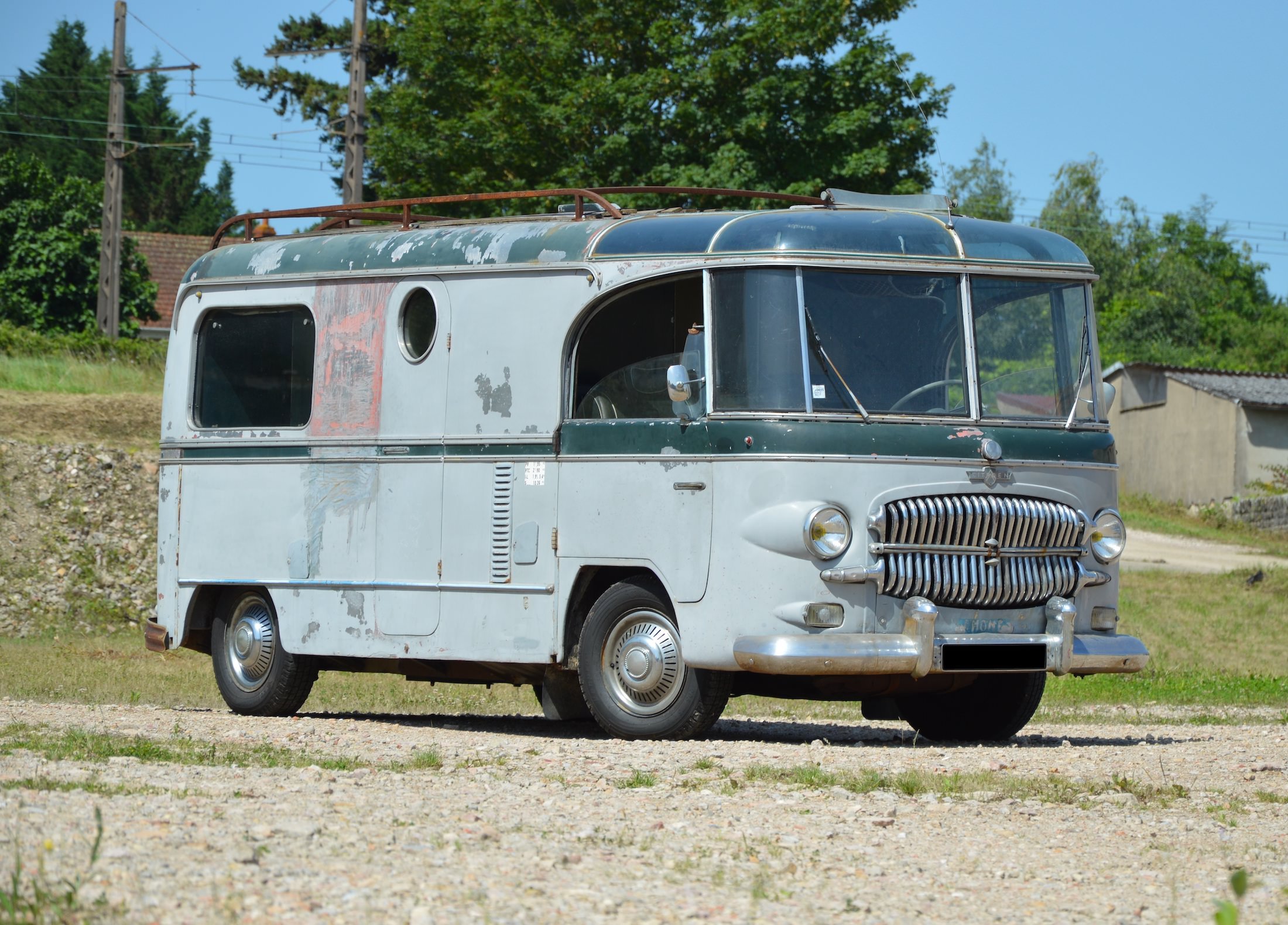
The post A Jet Age Citroën H Van By Barou: One Of A Kind Vintage Camper appeared first on Silodrome.
from Silodrome https://silodrome.com/citroen-h-van-barou/
via gqrds
